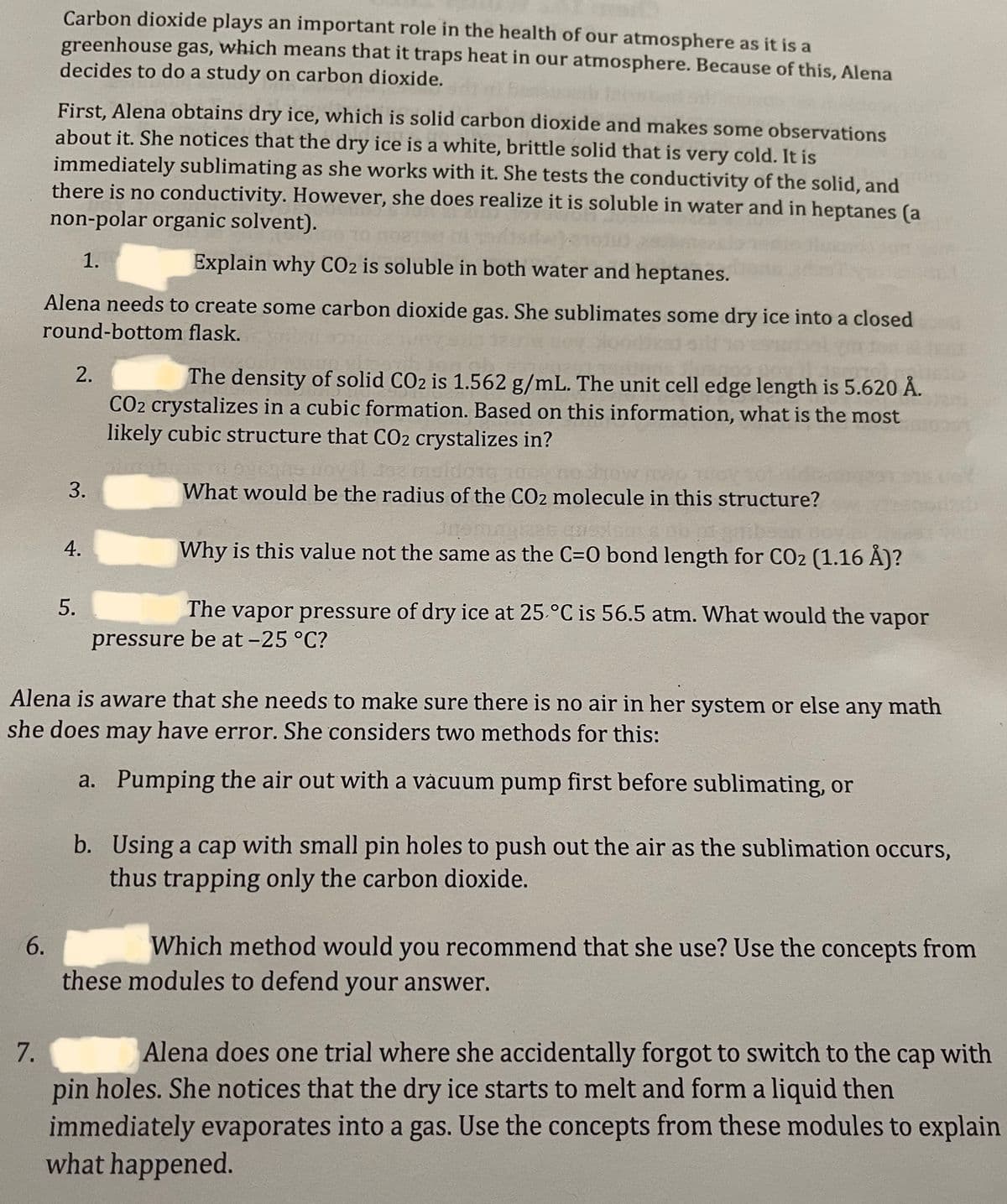Carbon dioxide plays an important role in the health of our atmosphere as it is a greenhouse gas, which means that it traps heat in our atmosphere. Because of this, Alena decides to do a study on carbon dioxide. First, Alena obtains dry ice, which is solid carbon dioxide and makes some observations about it. She notices that the dry ice is a white, brittle solid that is very cold. It is immediately sublimating as she works with it. She tests the conductivity of the solid, and there is no conductivity. However, she does realize it is soluble in water and in heptanes (a non-polar organic solvent). 1. Explain why CO2 is soluble in both water and heptanes. Alena needs to create some carbon dioxide gas. She sublimates some dry ice into a closed round-bottom flask. 2. 3. The density of solid CO2 is 1.562 g/mL. The unit cell edge length is 5.620 Å. CO2 crystalizes in a cubic formation. Based on this information, what is the most likely cubic structure that CO2 crystalizes in? 32 maidong 10es no What would be the radius of the CO2 molecule in this structure?
States of Matter
The substance that constitutes everything in the universe is known as matter. Matter comprises atoms which in turn are composed of electrons, protons, and neutrons. Different atoms combine together to give rise to molecules that act as a foundation for all kinds of substances. There are five states of matter based on their energies of attraction, namely solid, liquid, gases, plasma, and BEC (Bose-Einstein condensates).
Chemical Reactions and Equations
When a chemical species is transformed into another chemical species it is said to have undergone a chemical reaction. It consists of breaking existing bonds and forming new bonds by changing the position of electrons. These reactions are best explained using a chemical equation.
I need help with questions 1-7?

Trending now
This is a popular solution!
Step by step
Solved in 6 steps









